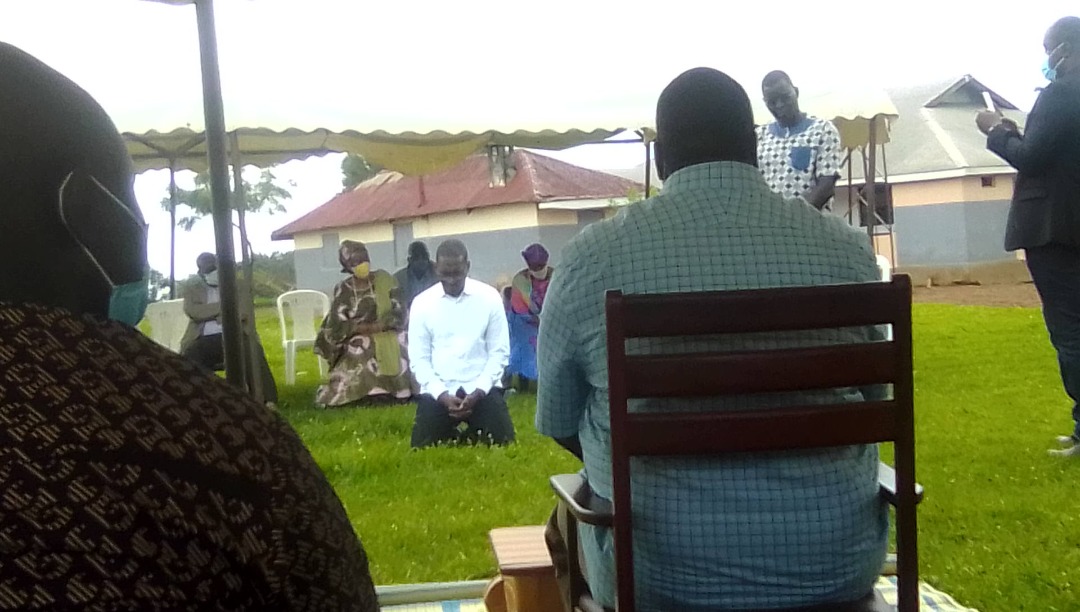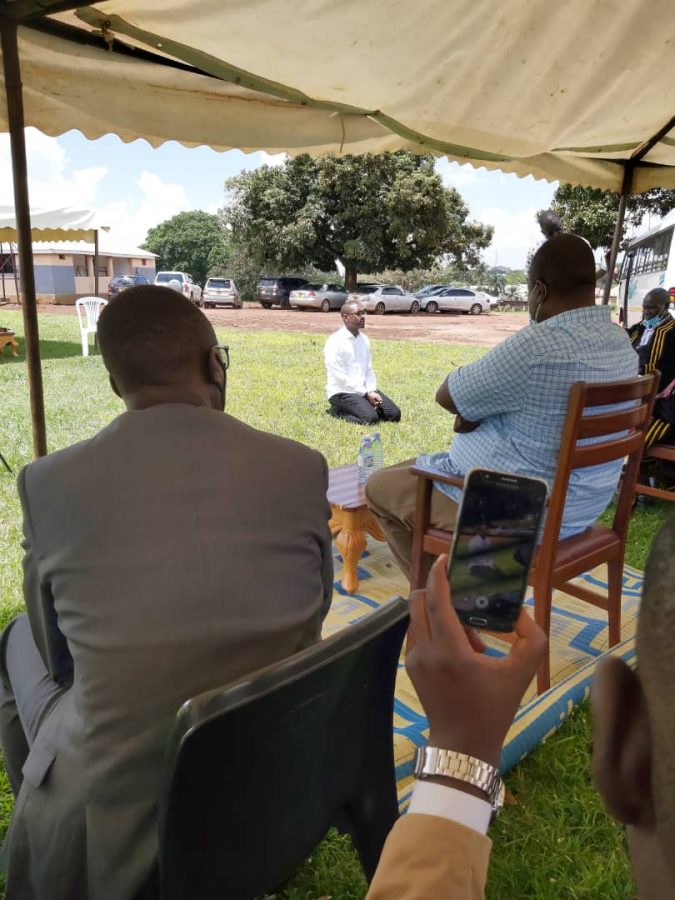
Mathew Kanyamunyu who is accused of Killing social worker Kenneth Akena is reported to have gone to Acholi land for cleansing and reconciliation purposes.
Our highly placed sources have revealed that Kanyamunyu went to Akena’s ancestral home to attend the traditional justice ceremony.
The ceremony is called Mato Oput and is aimed at reconciling and cleansing someone of bad omen.
It should be noted that prosecution alleges that on November 12, 2016, Matthew, Munwangari, Joseph and other accomplices still at large, while on Kampala- Jinja Road near Malik Car Bond, opposite Uganda Manufacturers Association offices in Nakawa Division murdered Akena.
The trio, who are out on bail, were committed to the High Court for trial in January 2017.
The summary of evidence presented by the Director of Public Prosecutions says there is sufficient proof of murder against the trio.
However, Joseph Kanyamunyu was separately indicted on an additional charge of being an accessory after commission of the offence.
What is Mato Oput?
Mato oput literally means “drinking oput Mato oput is widely known as a key element of Acholi culture beyond Acholi borders.
Not Infrequently, However, mato oput has been misunderstood and romanticized as a kind of magic bullet to solve virtually any type of conflict. Furthermore, the notion of mato oput has often been used metaphorically to refer to nearly every reconciliation process taking place in Acholi today, thus bringing confusion to the scope and nature of mato oput as properly understood.
Mato oput is the final act which concludes the process of reconciliation that follows a killing.
The Acholi rite of reconciliation is a long process of purification for psychological, moral and social re-integration.
The process has the initial purification rite, preparation of the reconciliation mix of fruit juice, acuga and roots opwut.
Applicability
According to, Thomas Harlacher Francis Xavier okot Caroline Aloyo Obonyo Mychelle Bathazard and Ronald Atkinson, authors of the recent book titled: Traditional ways of Coping in Acholi, Cultural provisions for reconciliation and healing from War, despite the extent to which the ceremony of mato oput has become known both inside and outside Uganda, its performance is relatively rare in contemporary Acholi, especially in the reintegration of former LRA combatants.
Preparation
Preparing the reconciliation mix to drink is done by an elderly person (senior of all in age).
The elder prepares from the roots, opwut. The roots are dug up and pounded on a stone to form some sort of powder.
The powder is mixed up with the fruit juice in a new calabash carefully placed on the ground.

Short Rite Of Purification
Before the family (Kanyamunyu family) sets to go to the designated village site of reconciliation, a brief rite of purification is performed by simply spitting into the mouth of the reconciliation sheep.
The accused (kanyamunyu) holds open the mouth of the sheep he is leading and spits some saliva into it.
That done, he then leads the black sheep to the farmyard of the mother of accuser (Akena family).
On reaching the farmyard, the sheep is laid on its back on the ground and its head in the north direction.
The sheep is then stabbed by one of the elderly persons, master of the ceremony with a sharp knife.
Successively another of the elderly persons lay another reddish-white sheep on its back on the ground, its head in the opposite south direction.
This sheep is presented to the elderly persons by the family of the killed (Akena’s family).
The elder then stabs it also with a sharp knife.
The close relatives of accused (Kanyamunyu) gather in the north direction of their slain sheep and likewise the close relatives of accuser (Akena family) gather on the side of their sheep.
The two-opposite direction, north and south of the heads of the ritual sheep signify the diversification of enmity which must be brought close together and the families of the two will no longer entertain hostilities but become reconciled and live in peace.
Drinking the Reconciliation Mix (mato oput)
The elderly person, master of ceremony, will take the blood of the two slaughtered sheep and pour it into the opwut and acuga mix to form a single mix of reconciliation drink.
The close relatives of the person killed and those of the killer come close to each other and converge on the mixed juice from their opposite directions in a gesture signifying end to hostilities and beginning of reconciliation.
Having converged on the calabash containing the mix of the reconciliation drink, the killer and a close relative of the one killed begin to drink.
They both kneel down and close on to the calabash, their hands are folded behind and they bend on to drink from the calabash without holding it by hands.
In this way they drink from the calabash three times and then leave way to their close relatives who have come to witness the ritual ceremony.
Accused (kanyamunyu) will start to drink followed by the relative, father of slain Akena.
The mother of the one killed always stands by bitterly weeping her slain son or daughter.
The elders will always keep her company in an effort to show kindness and affection and restrain her from excessive mourning which could otherwise provoke the close relatives of the slain into revenge.
They also invite her to partake of the opwut reconciliation mix.
Meanwhile the carcass of the sacrificial sheep is cooking on fire.
Consuming The Liver Of The Sacrificial Sheep
The liver of the two sheep is roasted, cut into pieces and put on the fresh hides of the slaughtered sheep and then eaten.
The accused (Kanyamunyu) takes a piece of liver and feeds it into the mouth of the close relative of the slain (Akena) who consumes it.
Likewise, the close relative of the slain takes a piece of liver and feeds it into the mouth of the killer who consumes it.
The rest of the meat of the sheep is cooked for consumption.
Examination Of And Blessing The Indemnity
Meanwhile the meat is cooking in the fire some elders come up to examine the indemnity which the family of the killer must pay to the family of the slain person.
They are two fat and healthy cows which have become substitute of paying indemnity with a person namely a girl.
When accepted, the elders bless the indemnity by smearing the chest of each person present with the content of the entrails of the sheep.
The content is put on the chest of all persons present saying:
“Let these cows produce many and only female off-springs.
We all do mistakes, May peace and calm now return among us”
Celebrating The Reconciliation:
In this way reconciliation rite is accomplished.
An older person begins to drum from the royal bwola drum.
The women shout ululations and clan mottos while an old man drums.
On hearing the drums sounded the people from all over the neighbourhood come and join in the happy dance and merry making.
The feasting continues even for a second day when more bulls are slaughtered to feed the people who have witnessed the reconciliation.

